Sketch
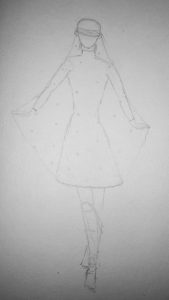
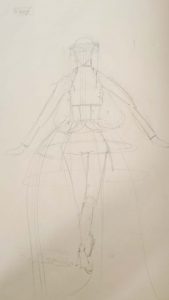
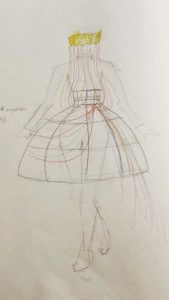
Skirt Volume Prototype
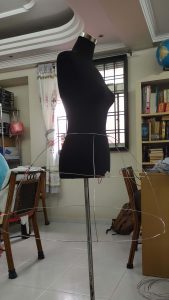
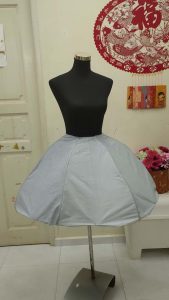
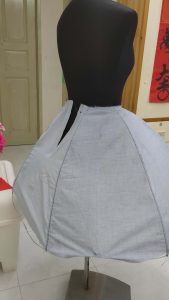
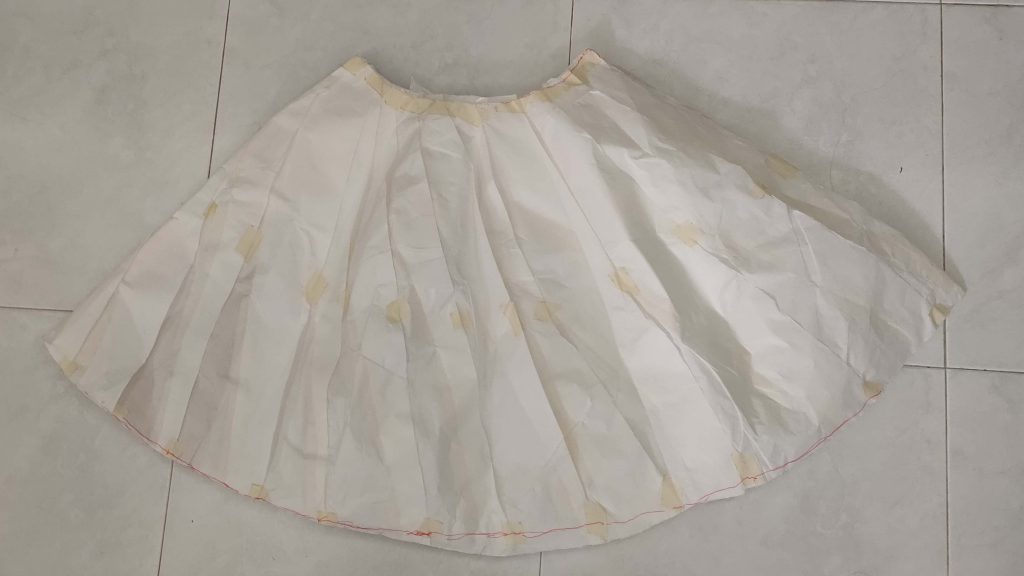
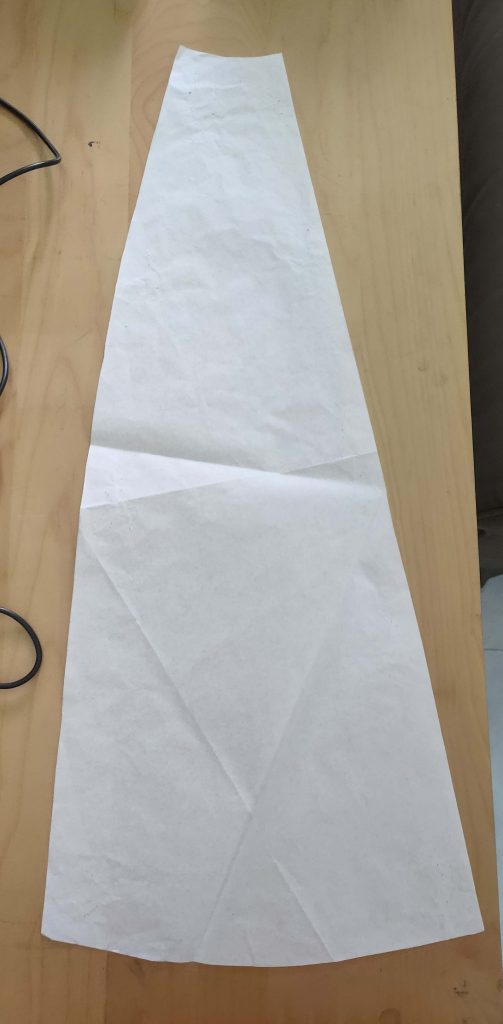
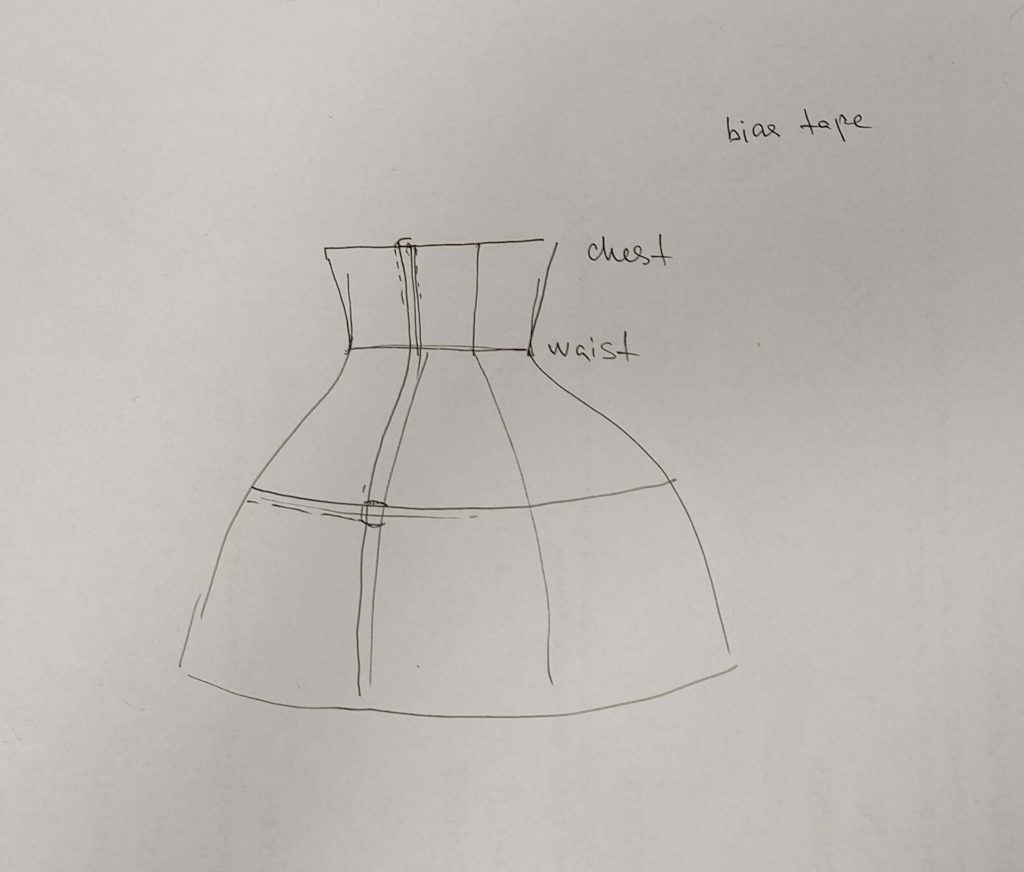
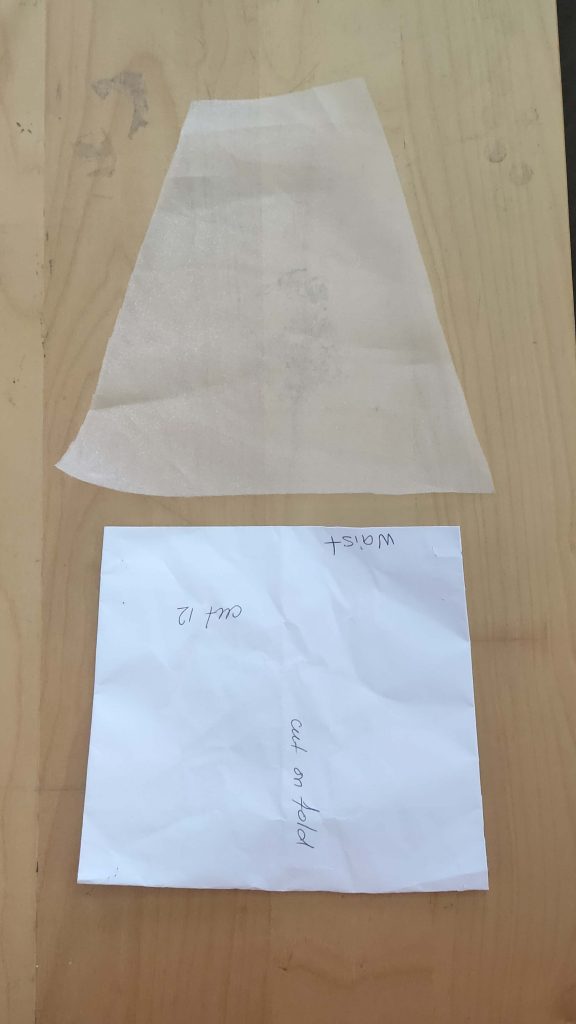
Some Skirt Construction
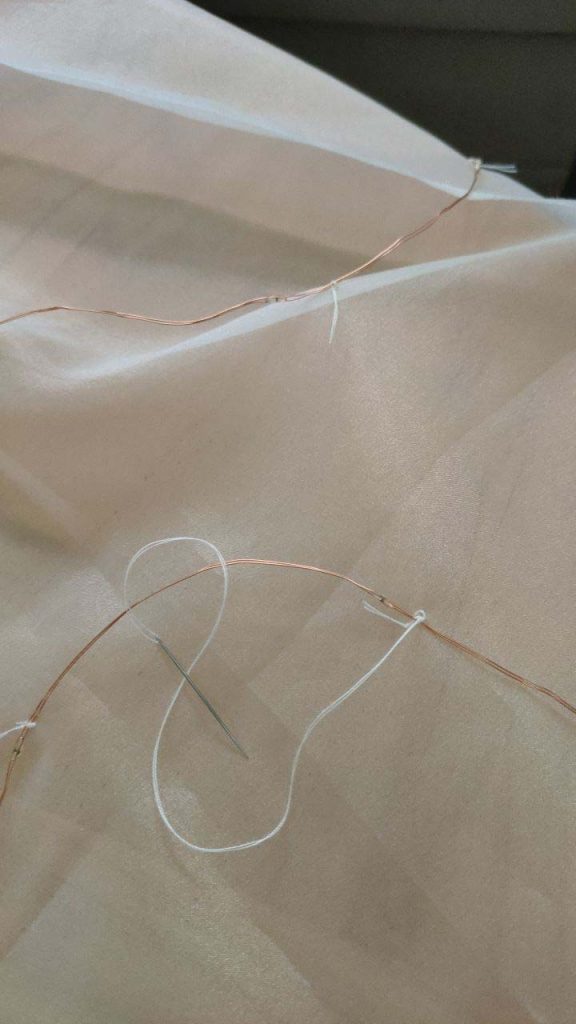
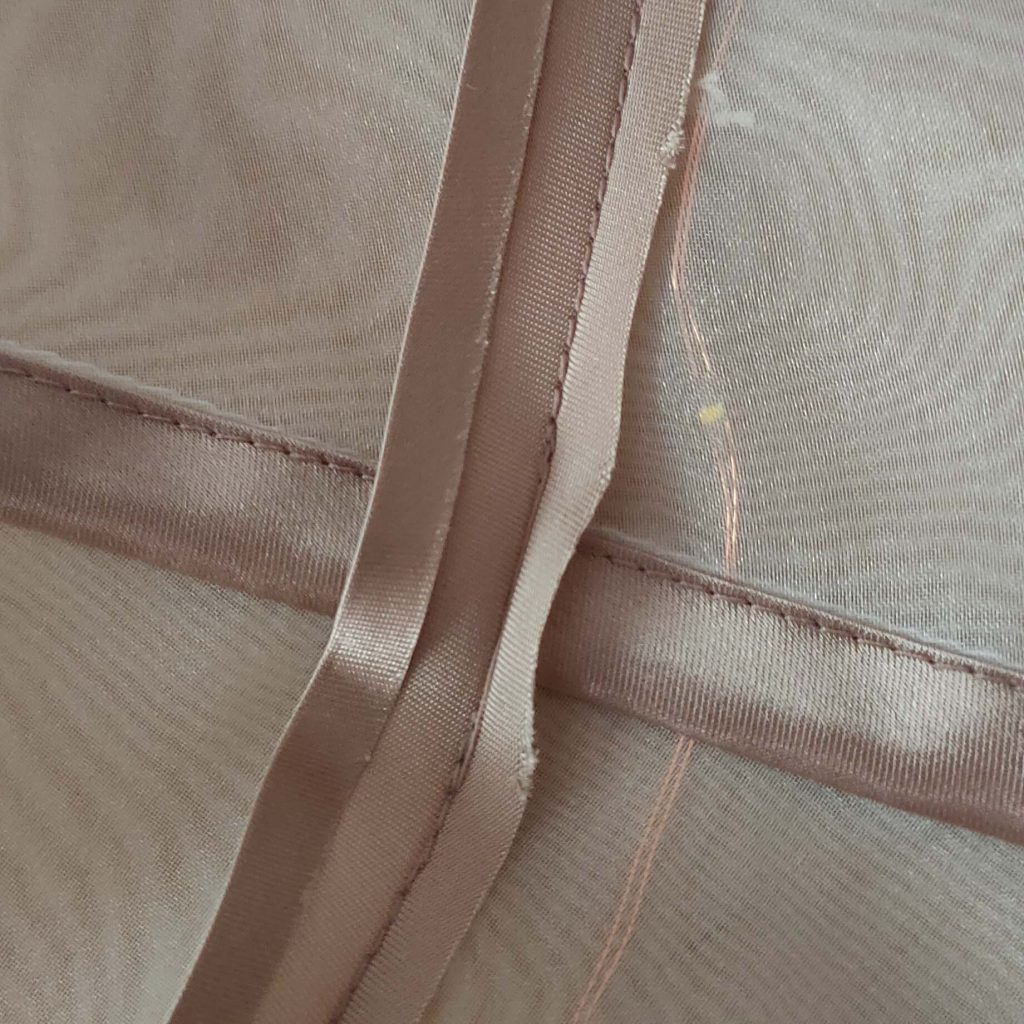
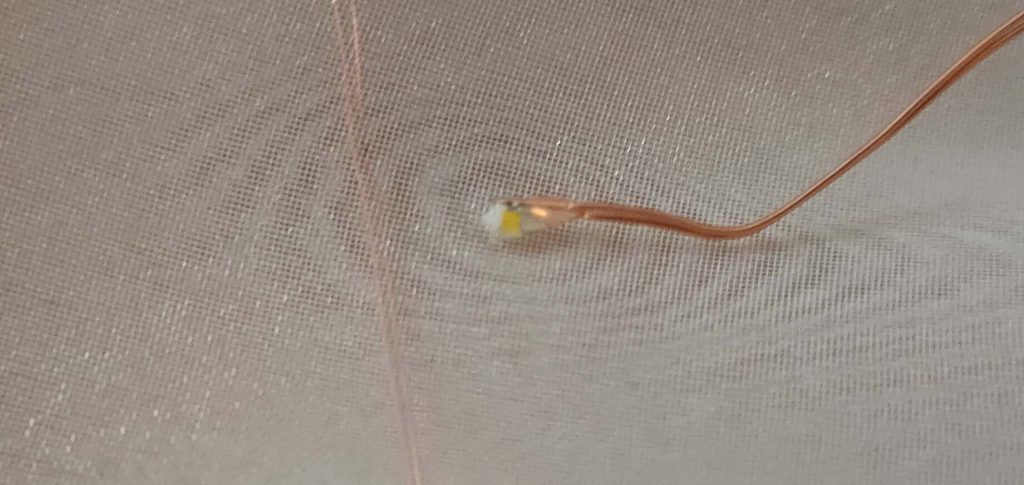
Hand-Crochet Fringe
Tutorial here: https://howdidyoumakethis.com/custom-fringe/
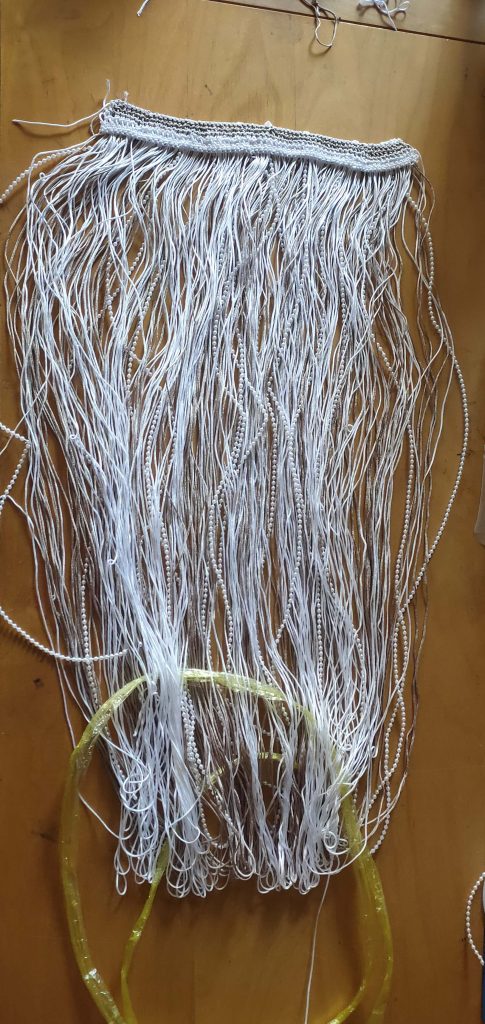
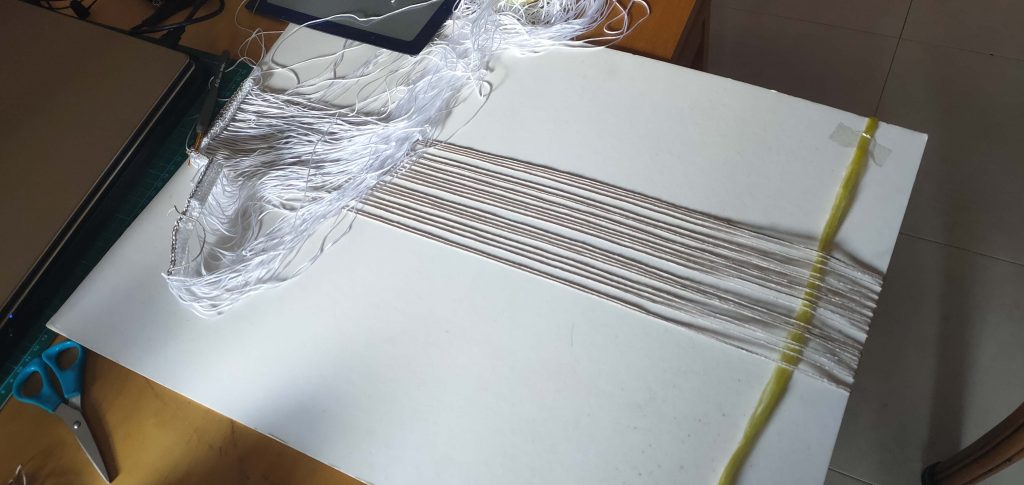
Tech Construction
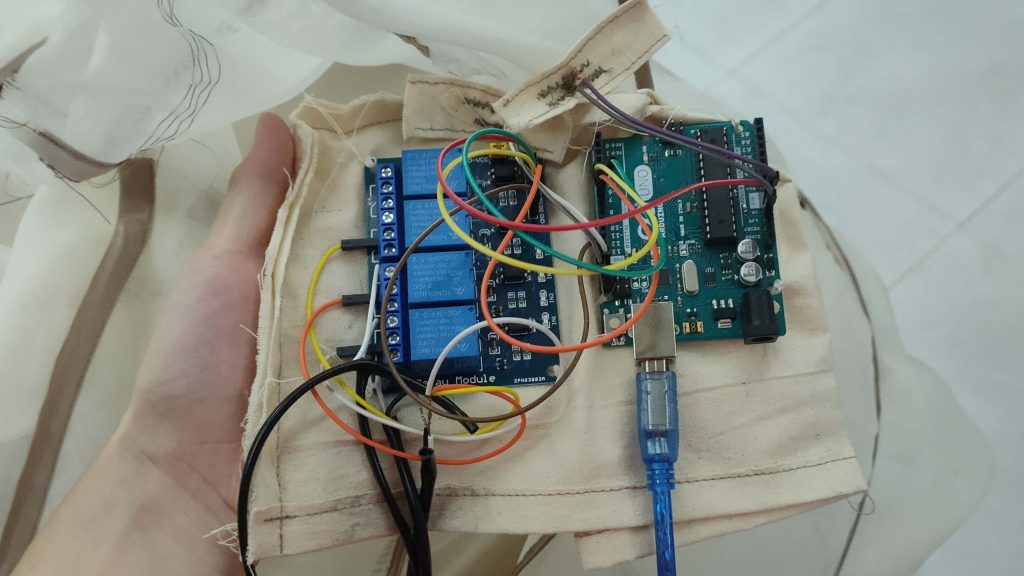
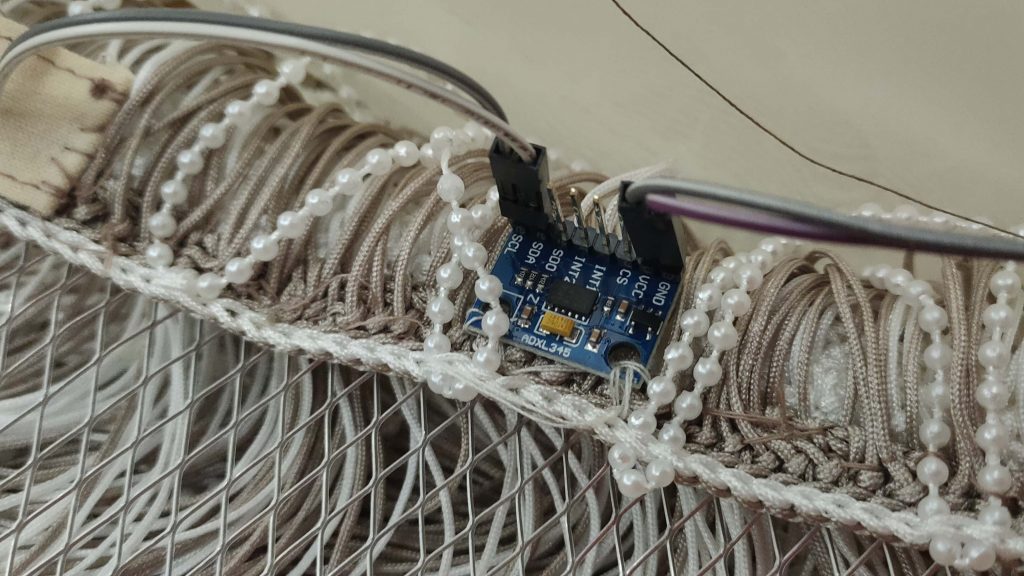
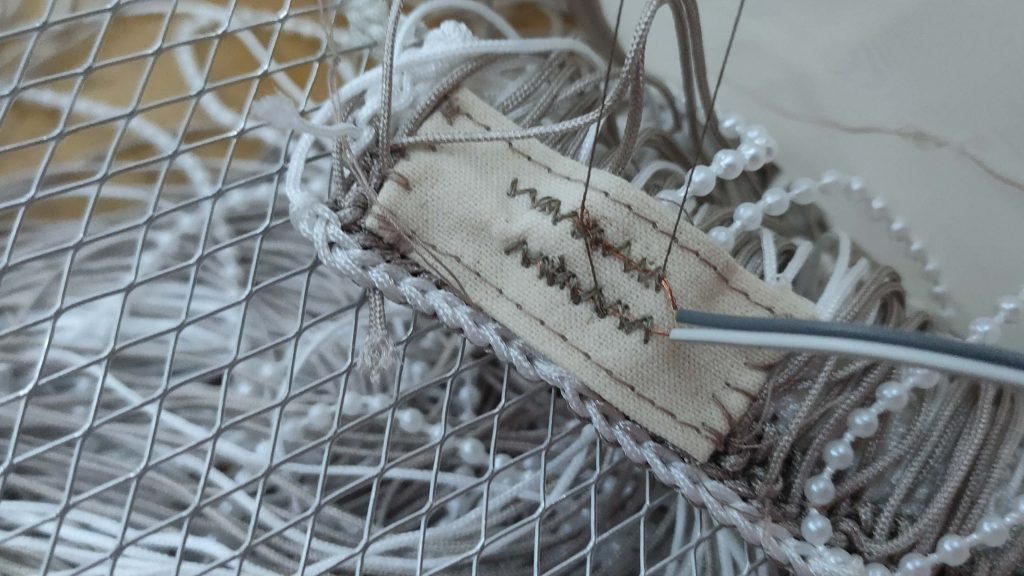
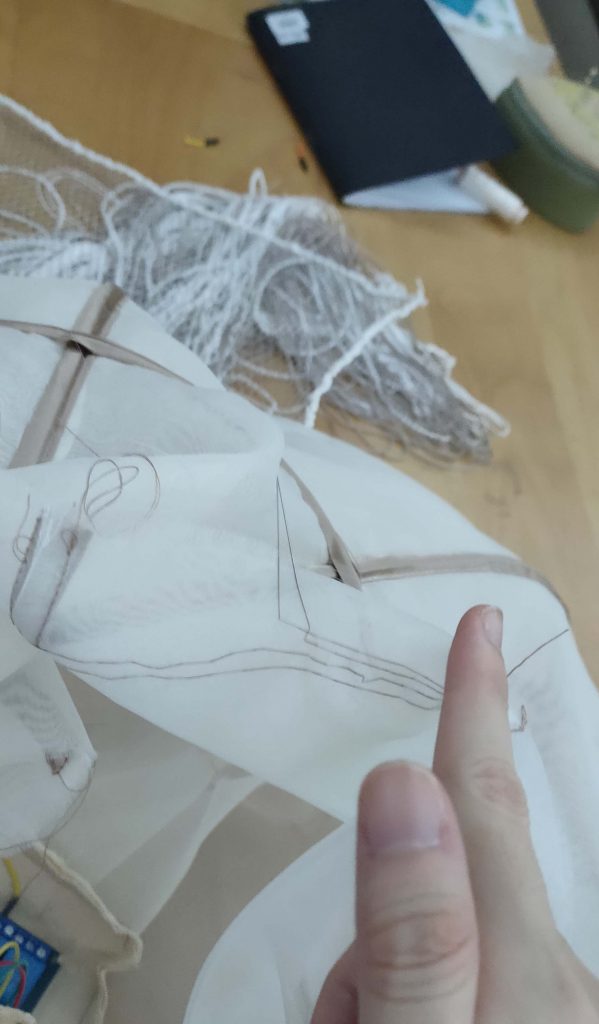
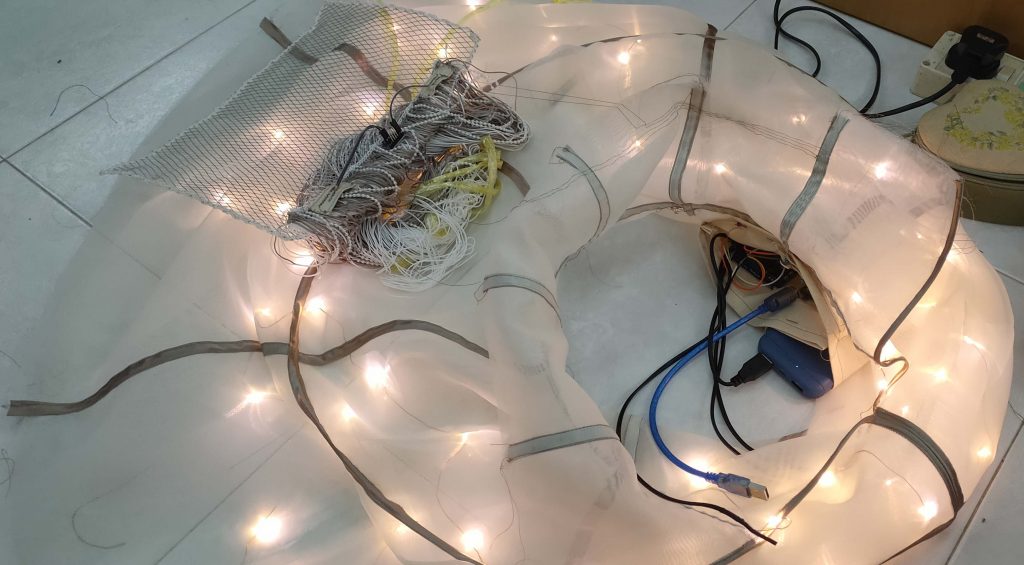
Prev: Moodboard
Welcome to my blog!













Tutorial here: https://howdidyoumakethis.com/custom-fringe/







Prev: Moodboard
Concept
Identity is an elusive concept. It is a thing that presumably everyone should possess; to know who and what they are. But if there is no singularity in a person’s identity then which is the true you? Under French Psychoanalyst, Jacques Lacan’s theory – The Mirror Stage, describes a scenario where a baby meets its own reflection for the first time. That is when it discovers itself, recognizing ‘me’ to be different from the objects in its surroundings. The discovery is centered around desire which is directed outside. Thus, “The not you, are a fundamental part of you.”
IN/EX draws inspiration from the mirror-ing and fluctuation of desires. The idea is mainly translated in the tech part whereby following the sight of the wearer, the exterior is reflected within, in the illuminated skirt. The veil and transparency of the garment is meant to represent the husk of the human appearance that is influenced by external happenings. The face of the mask is best to be covered with reflective elements for the mirror-ing aspect but when attempted it seemed to overpower just the mask and I intend to scatter some around the skirt to bring some balance to the work.
‘Final’
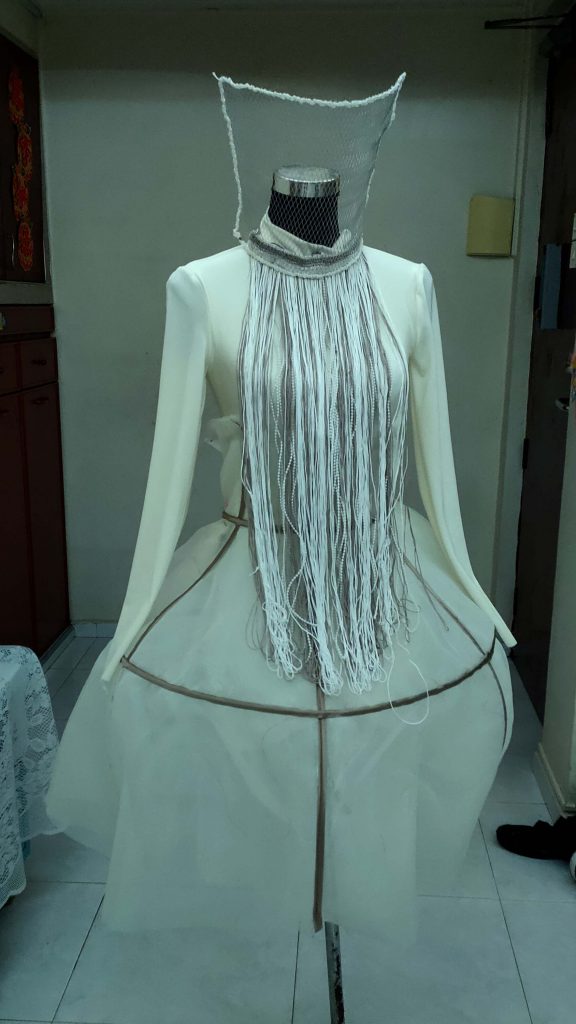
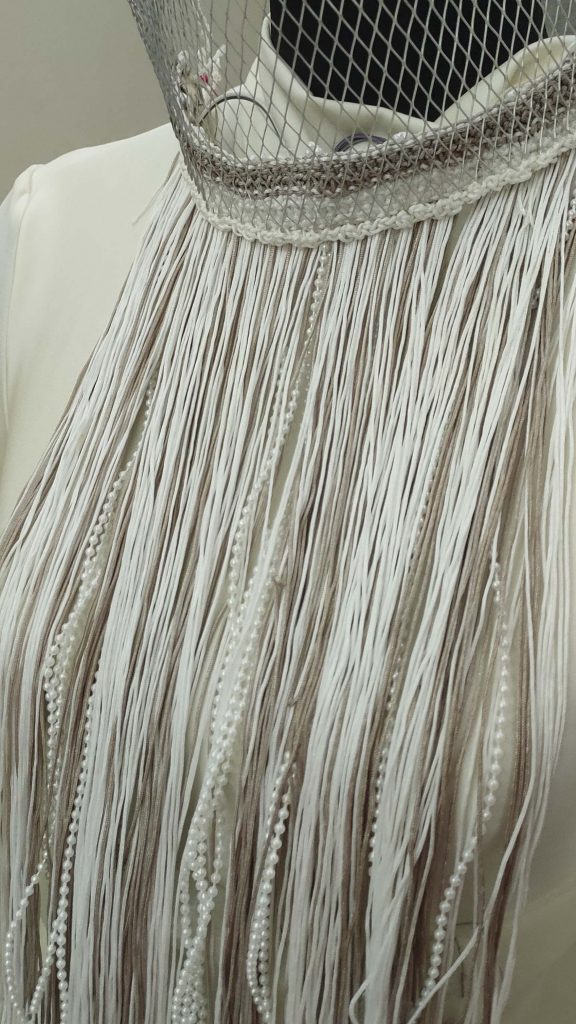
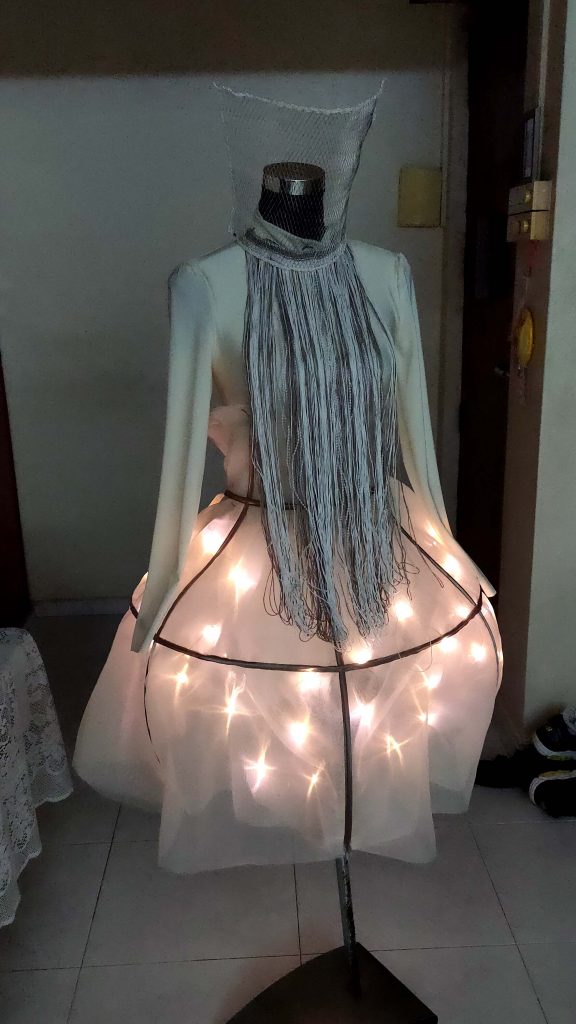
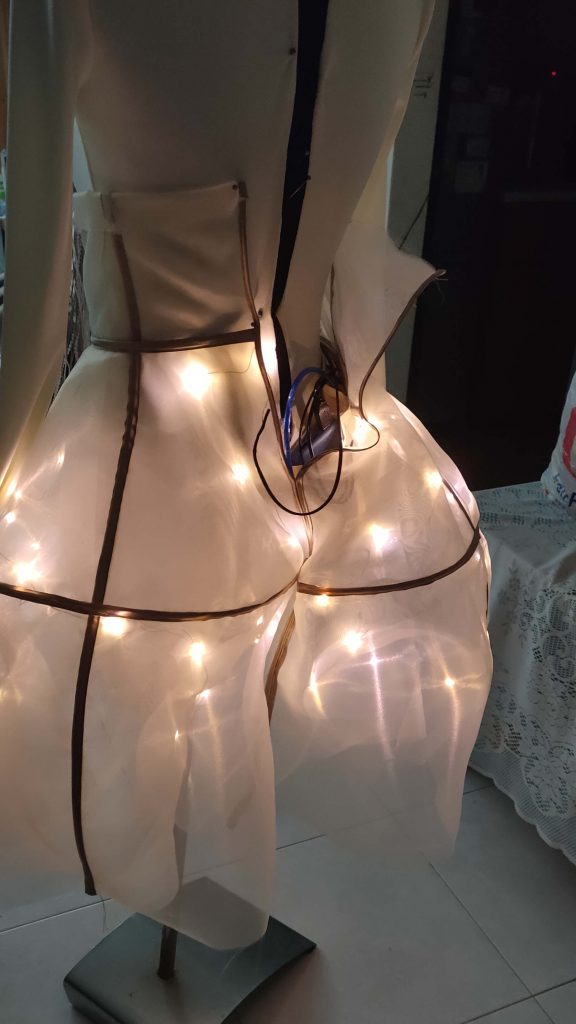
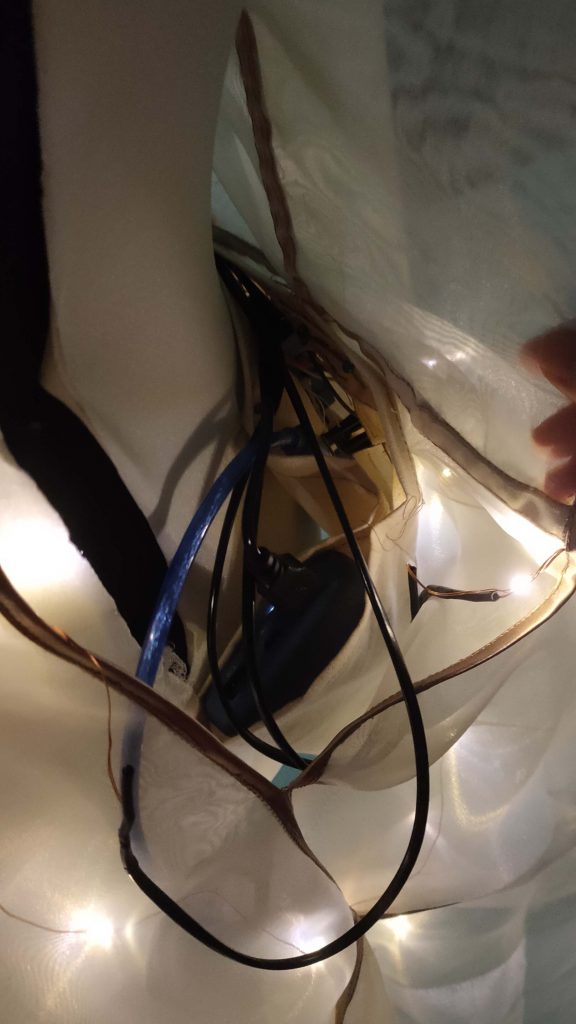
Tech
Fashion Show Role & Contribution
I was one of the two that were going to handle the music for the fashion show. Unfortunately, I was not present for the last lesson and am not sure if anything about the themes were discussed. But I wanted to create soundscapes tailored for each garment to bring them into spatial realm. Perhaps cyberpunk inspired.
Prev: Process

This is an example of biomimicry in the field of architecture, borrowing the natural interior structure of African termite nests to create sustainable buildings. The Eastgate centre has managed to achieve 10% less energy consumption compared to other conventional buildings its size. That is an impressive feat to be able to regulate temperature of a mid-rise building without air-conditioning or heating.
So how do these self-cooling mounds work?

Cooling Vents!
African termites feed on a fungus that they farm in their mounds and these fungus can only grow at 87 degrees F. Since the climate in Africa ranges from 35 degrees F at night to 104 degrees F during the day, the termites invented a series of cooling vents to maintain the interior temperature of the mound.
Through constant opening and closing of these vents, the termites are able to suck in air at the lower parts of the mound, through the tunnels and up to the peak. These vents are also always under construction as new ones are constantly being built and old ones are plugged up. It is a brilliant way to regulate temperature naturally considering that hot air rises up and cool air sinks.

Despite that, it should be noted that the series of vents are regulating the temperature and not exclusive to cooling. The system also works with other materials as the Eastgate Centre is made out of concrete. The outside air that is drawn in can be warmed or cooled by the building mass depending on which is warmer. Similar to the termite mounds, the air is through the multi-storeys and offices before exiting out the chimneys at the top.
The energy sustainable building not only benefits the environment but also the people. The owners of the Eastgate centre saved $3.5 million for air-conditioning that was omited from the design and this helped the tenants with 20% lower rents than it neighbours. Both an climate and economic solution.
Reference:
https://biomimicry.org/biomimicry-examples/
https://inhabitat.com/building-modelled-on-termites-eastgate-centre-in-zimbabwe/
https://asknature.org/strategy/mound-facilitates-gas-exchange/#.VB52Ry5dUa0




Ying Gao is a Montreal based fashion designer and professor at University of Quebec whose interactive work features a lot of animated textiles. Her recent project – FLOWING WATER, STANDING TIME capture the ever-changing persona of Jimmie G from the novel, The Man who Mistook his Wife for a Hat. He is a middle age man who thinks himself to be still a youth at 19 years old, and he jumps between these two mental age which Ying Gao describes as a metamorphosis.

According to Dezeen, “The garment reacts to the chromatic spectrum using colour, light sensors and tiny cameras that are connected using a rasberry PI computer, to gather information about their environment. This data then activates a series of actuators and magnets interlaced with silicone to cause the fabrics to move.” It is interesting to note that besides silicone, the fabric also includes glass elements created in studio. These combination of materials, helped Ying Gao to achieve the shifting hues in the “chameleon-like” autonomous dress.
As far as my knowledge goes, Raspberry Pi is another version of an Arduino, they are both open source technology that are sustained by the creative digital community. Tutorials and project ideas are quite abundant online and there are even ways to help find nearby Raspberry buddies to get creative together. The true benefit of open source technology is that it is firstly, free knowledge. Secondly, the amount of projects available for reference is infinite, the number will always be growing as people feed off ideas of others to make their own.
I have played around with a Circuit Playground before, it is a cousin of the Raspberry Pi. So references and forums I have searched online were a learning process to aid my production process. I think as I am a designer, I do not know what their difference is technically, only that they have a different shape. In this case, we designers need the engineers for their in dept understanding of the electronics. The designers come up with ambitious ideas that cannot be fulfilled themselves and Ying Gao has experienced this with this project. She says “Technically and technologically speaking, this project is different from the previous ones because the clothes have a much greater autonomy,”